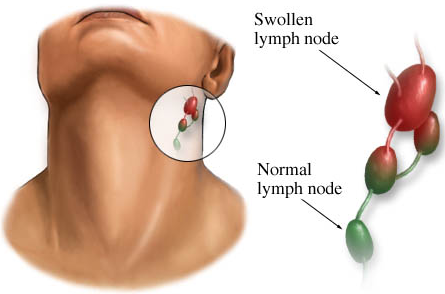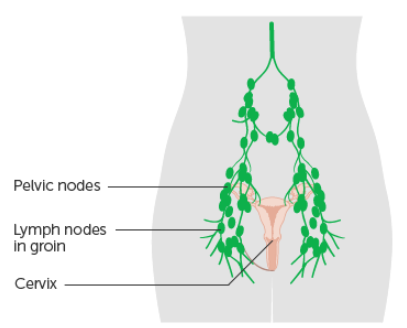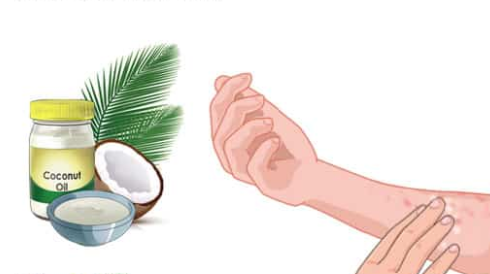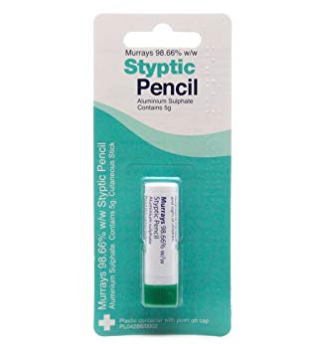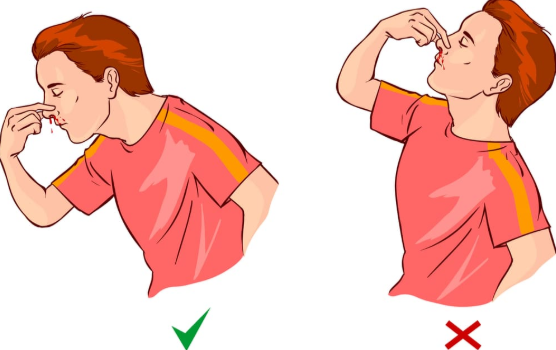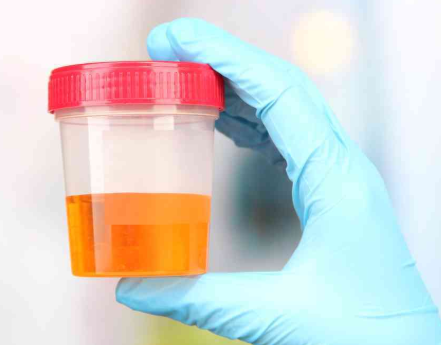What causes swollen lymph nodes on one side of the neck or under the jaw? Get an overview of lymph nodes in neck, under the jaw and their possible home remedies and treatment.
Swollen Lymph Nodes in Neck one Side
Lymph nodes are small glands that are part of the lymphatic, they are mainly found in the groin, neck and armpit. Lymph nodes as part of the lymphatic system play the function of filtering lymph fluid and trapping viruses, bacteria, cancer cells and other pathogens and eliminating this debris from the body.
Human body has around 600 lymph nodes of which 0ver 200 are located in the neck region alone. Within the neck region they are invariably located just under the skin. Lymph node structurally they are soft in consistency and round or oval in shape, however if the lymph nodes get infected or inflamed they become swollen and tender to touch.
Symptoms of swollen lymph nodes in neck one side
Swollen lymph nodes are usually a pointer that something is wrong within the body; however symptoms of swollen lymph nodes may include:
- They may be painful and tender when touched
- Swollen nodes may have the shape and size of a kidney bean
- Sore throat and difficulty in swallowing
- Night sweats
- Sometimes swollen lymph nodes may be accompanied by fever and runny nose.
Swollen lymph Nodes in neck One Side-causes
Some of the potential causes of swollen lymph node in neck one side are:
- INFECTION
Common infections that cause swollen lymph nodes include:
- Systemic infection like measles, mumps and Rubella
- Infected wound like cellulitis
- Sexually transmitted diseases such HIV infections and herpes
- Severe ear infection
- Strep throat
- Skin infection
- Toxoplasmosis
- Parasites transmitted from infected cats or undercooked food.
- Glandular fever
- ALTERED IMMUNE SYSTEM
Immune system of human body is responsible for fighting and overcoming diseases. When the immune system is altered by certain conditions such as Rheumatoid arthritis, lupus which affect lungs, leukemia, viruses and other type of cancers, all these can lead to swollen lymph nodes in the neck.
- SIDE EFFECT OF MEDICINES
Swollen lymph nodes in neck one side can be experienced as a result of side effects of some medicines like phenytoin ( prescribed for seizures); or side effects of immunization against malaria, typhoid or symptoms of some diseases like sarcoidosis, Kawasaki diseases and disease of glycogen storage.
- ALLERGIC REACTION
Swollen lymph nodes in neck one side can be caused by allergic reaction to various agents such as deodorants, antiperspirants and cosmetics.
- INJURY
Injury to the neck or face can lead to swollen lymph nodes in neck one side.
- CANCER
Swollen lymph nodes can be due to cancers such as lymphomas (cancer of the lymphatic system) or can be due to cancer of the blood known as leukemia. Depending on the type of cancer, the lymph nodes may or may not be present with any pain.
- LIPID STORAGE DISEASE
This is a disease that leads to excess lipids in the blood stream. These lipid substances include cholesterol, triglycerides and lipoproteins. Once these lipids are in the blood stream they can be deposited to wrong places such as neck, groin or hands, this further result to swollen glands.
- SKIN TRANSPLANT
Skin transplant is the process of transferring skin cell from one site to another. For a transplant to be successful, the donor and the recipient must be immunologically compatible. If this is not achieved, the recipient immune system may reject the transplant and treat it as a foreign substance. The immune system in response generates a type of reaction that cause swelling of the lymph nodes.
Swollen Lymph Nodes under Jaw
Sometimes the lymph nodes may get infected due to some disorder in the body, which can lead to jaw pain under the jaw line, or on one side of the jaw line or both. Sore lymph nodes under jaw can be quite discomforting for chewing and speaking.
However tooth infections and abscess are known to be responsible for painful lymph nodes under the jaw. Infections in the ear can also trigger the feeling of pain in the glands, below the chin and Jaw. Also Lymph node under jaw may appear to be painful and swollen as a result of over production of white blood cells in the lymphatic system.
Swollen Lymph Nodes in Neck Pictures
Home Remedy for Swollen Lymph Nodes in neck on Side
- Turmeric
Turmeric being a therapeutic herb is particularly effective in reducing the swelling of enlarged lymph glands. Turmeric has anti-inflammatory as well as analgesic properties that help reduce swelling and pain. It also has anti-bacterial ingredients which even fight infections and facilitate healing.
- Mix 2 tablespoon of turmeric powder with enough honey to make a paste.
- Apply the paste on swollen area; leave it on for 20 minutes.
- Rinse it off with lukewarm water.
- Repeat this process 2 times daily for about a week.
- Echinacea
Echinacea is a widely used remedy for swollen lymph nodes in the neck and throat. It contains strong anti-inflammatory and antimicrobial properties. Using Echinacea can help to strengthen the function of the lymph system, fight the infection causing swollen lymph nodes and purify the lymph nodes and blood.
To use Echinacea ointment
- Apply Echinacea ointment or cream to the swollen areas two or three times a day for about one week to reduce swelling.
- Drink 2 cups of Echinacea tea daily for one week.
- Take 300mg of Echinacea supplements twice daily for no more than 1 week after consulting your doctor.
- Cayenne Pepper
Cayenne Pepper is a powerful and effective remedy for swollen lymph nodes because it can work as a natural stimulant. When used it reduces the symptoms of swollen lymph by boosting the resistance. To get a significant relief, it is advisable drinking cayenne pepper tea.
To use Cayenne Pepper:
- Add powdered cayenne pepper and honey into a glass of warm water.
- Stir thoroughly.
- Drink 3 cups of this solution daily for one week to reduce the symptoms of swollen lymph nodes.
- Tea Bags
Tea bags are effective in alleviating swelling and other lymph node related symptoms:
To use Tea bags:
- Take some tea bags and soak them in hot water for a few minutes.
- Apply it to the affected areas.
- Repeat it three times daily for one week to get the satisfactory results.
- Nutmeg
Nutmeg is used a spices in foods, it contains aphrodisiac properties that helps to treat the symptoms of swollen lymph nodes by boosting the flow of lymphatic fluid and improving the immunity. It also contain antibacterial and anti-inflammatory properties that can help to alleviate lump on the neck or throat.
To use Nutmeg:
- Add Nutmeg powder into a cup of hot water
- Add one tablespoon of honey to taste
- Drink it daily for one week to treat swollen lymph nodes effectively
- Plantain and Raspberry leaves
Plantain and raspberry leaves have been used for medicinal purposes for a very long time.
To use this remedy:
- Crush a handful of plantain and raspberry leaves into a fine paste.
- Add these pastes to a cup of boiling water and allow it to steep for 10 minutes
- Strain the solution,
- Drink two cups of this solution daily for one week to treat the infections causing the lymph nodes to swell.
- Warm compress
Warm compress is very powerful when it comes to reducing swelling of the lymph glands. The warm temperatures help to increase blood circulation which in turn reduces pain as well as swelling.
- Soak a washcloth in hot water, remove and wring out the excess water.
- Place the warm washcloth on the swollen lymph nodes
- Allow it to sit for 5 to 10 minutes before removing it.
- Repeat this process a few times daily until the swelling is gone.
- Honey
Honey has constituents that have anti-inflammatory and antibacterial properties that help to ease pain, swelling and fight infection that is likely to be causing swelling of the lymph nodes.
- Mix 2 teaspoon of raw honey and some fresh lemon juice in a cup of water
- Drink this remedy 3 times daily.
- Alternatively, apply some raw honey on the swollen lymph nodes
- Allow it to sit for 30 minutes then,
- Rinse it off with lukewarm water.
- Repeat this process 2 or 3 times daily until the swelling goes always.
- Garlic
Garlic has antibiotic ingredients that help to cleanse the system, ease symptoms and promote healing. Garlic is also rich in anti-inflammatory properties that can help reduce swelling in the lymph nodes.
- Crash 2 raw garlic cloves daily.
- Apply remedy over the swollen lymph glands as you massage the area gently for at least 10 minutes.
- Allow the remedy to sit for 10 minutes then,
- Rinse the swollen area with lukewarm water.
- Alternatively, you can take a garlic supplement daily, after consulting your doctor.
- You can also eat 2 to 3 raw garlic cloves daily.
- Apple Cider Vinegar
Apple Cider vinegar helps to create an alkaline environment and maintains a Healthy PH in the body. Also has an antibacterial ingredient that helps to kill bacteria that may be causing this problem.
- Mix equal amounts of raw, unfiltered apple cider vinegar and water.
- Soak a washcloth in the solution and apply it on the swollen lymph glands.
- Leave the remedy for at least 20 minutes before rinsing it off with lukewarm water.
- Repeat this process two times daily for 1 week
- Alternatively, mix 1 tablespoon of raw, unfiltered apple cider vinegar and a little raw honey in a glass of water. Drink it twice daily.
- Massage
Massaging stimulates the lymph nodes to help them function normally. This helps to get rid of the swelling and reduce the accumulation of impurities in the nodes.
- Using your fingers, gently massage the lymph nodes for about 5 minutes.
- Repeat this 2 or 3 times daily until the swelling goes away.
- You can also hire a professional to give you a lymph drainage massage.
- Cleavers
Cleavers has therapeutic properties that stimulate the functioning of the lymphatic system to reinforce proper functioning. This in the long run helps in reducing swelling.
- Add 2 tablespoon of cleavers herb to a cup of hot water. Steep for 10 minutes then strain it. Drink this tea 2 to 3 times daily until you notice improvement.
- Alternatively, take 20 to 30 drops of cleavers tincture mixed with water daily.
- Castor oil
Castor oil has anti-inflammatory and analgesic properties, to reduce swelling in lymph glands. It also improves the flow of lymph throughout the body, speeding up the removal of toxins. This helps reduces the size of swollen lymph nodes. It even gives a boost to your immune system.
- Gently rub some castor oil on the swollen area for 5 minutes.
- Dip a washcloth into hot water then wring out excess water.
- Apply the warm compress on the area for another 10 minutes.
- Repeat this process 2 times daily for a week.
- Spirulina
Spirulina contains antioxidants, B vitamins, omega 3 fatty acids and other nutrients such as potassium that are necessary for health. These nutrients make spirulina to become one of the most effective and powerful home remedy for swollen lymph nodes. Omega 3 fatty acids and anti-inflammatory properties of spirulina can alleviate the symptoms of swollen lymph nodes like pain and inflammation effectively.
- You can buy the organic Spirulina smoothie at the market.
- Drinking this smoothie every day can help to improve the swollen lymph nodes within one week.
- Alternatively, you can take Spirulina capsules after consulting your doctor.
When to see a doctor and diagnosis
It is always advisable to see your doctor if you notice lymph nodes with the following characteristics.
- Hard lymph nodes that is difficult to move under the skin
- Having had swollen lymph nodes for two to four weeks
- Lymph nodes have sharp pain that does not go away
- Lymph nodes having additional symptoms like night sweats, night chills, fatigue, weight loss and a high fever.
If you experience any of these symptoms, or if you have painful swollen lymph nodes and no other symptoms, consult your doctor. Lymph nodes that are swollen but not tender can be signs of a more serious condition.
At your doctor’s office, your doctor will generally get a full history of the currently manifesting symptoms to get a better understanding of why you have swollen lymph nodes. In the process of physical examination, the doctor will touch to have a feeling and to get a better idea of the size of your lymph nodes and probably get to know how inflamed they actually are.
After physical examination, a blood test may be carried out to check for certain diseases or hormonal disorders. Also your doctor could possibly conduct a biopsy of the lymph node itself to reveal any abnormalities. A biopsy involves using a thin, needle like tools to remove a sample of cells from the lymph node. After which the cells are taken to the laboratory where they are tested for major disease, such as cancer.
After your doctor has received the laboratory tests, he may opt to remove the entire swollen lymph node.
Treatment of lymph nodes in Neck one side
Having swollen lymph nodes may not always be a cause for concern; however, because they are caused by many causes and circumstances, it is important that they are inspected by a medical professional. Typically, swollen lymph nodes go away after the underlying infection has been treated successfully. However, if they remain for an extended duration and are accompanied by another symptom such as fatigue and weight loss, there may be a serious underlying condition you should have assessed right away. Below are some of the treatments that can be administered to get rid of swollen lymph nodes:
- Prescribed medicine: There are medications such as antibiotics to get rid of swollen lymph nodes that are prescribed by the doctors after analyzing the underlying causes. Minor viral infections may go away on, its own within a couple of days.
- Painkillers: Over-the-counter pain medications can be taken
- Iodine Intake for Thyroid disease: Sufficient supply of amount of iodine helps control the swelling of the thyroid glands.
- Gargling: Gargling with warm salty water can to a great extend reduce the swelling of the glands If the cause is tooth abscess.
- Swollen lymph nodes caused by cancer may not shrink back to normal size until the cancer is treated. Cancer treatment may involve removing the tumor or any affected lymph nodes. It may also involve chemotherapy to shrink the tumor.
FURTHER REFERENCES:
